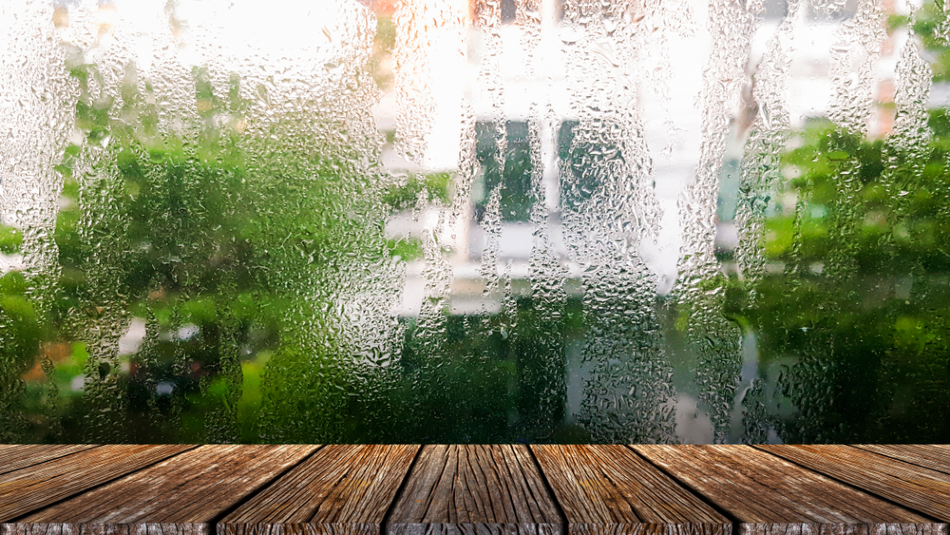
Image Credit: leawtogoblack/Shutterstock.com
As the name suggests, “self-cleaning glass” can clean dirt and grime present on its surface and requires minimal amounts of maintenance. The development of such glass is due to the advancement in the field of nanotechnology, where the ultra-thin coating imparts the self-cleaning property to the glass. A smart window with a self-cleaning glass facility can also significantly reduce window cleaning costs in tall buildings.
The Role of Titanium Dioxide (TiO2) Nanoparticles in Self-Cleaning Glass
Titanium dioxide is a highly reactive catalyst that is extensively used in the industry. It has many unique properties, for example, titanium dioxide can be characterized as a white powder in bulk quantity. However, titanium is transparent at a nanoscale dimension.
In 1967, Akira Fujishima at the University of Tokyo first discovered the photocatalytic property of titanium dioxide. The concept of self-cleaning surfaces using photocatalysis originated here.
Another interesting property of TiO2 discovered in later years is its hydrophilic nature. Photocatalytic and hydrophilic properties play an essential role in the production of self-cleaning glass. For the industrial mass production of self-cleaning glass, TiO2 nanoparticles are typically coated on the glass surface using a vacuum coating technique called chemical vapor deposition (CVD). This technique involves the deposition of an ultra-thin coating applied in the form of vapor.
Click here for more information nanoparticle characterization equipment
The Role of Vanadium Dioxide Nanoparticles in the Production of Glass with Three Key Features
A particular type of glass with three unique features has been developed by the University College London (UCL) in collaboration with the Engineering and Physical Sciences Research Council (EPSRC). The features are discussed below.
- Self-cleaning: Glass coated with vanadium dioxide nanoparticles is ultra-resistant to water. The presence of the conical-shaped nanoparticles on the glass surface traps air and allows a minimal amount of water molecules to come into contact with the glass surface. Therefore, when rainwater hits the glass surface, a spherical droplet of rain removes dirt, grime, and dust as it slides down. In conventional glass, raindrops adhere to the surface of the glass and leave behind marks of dirt as they slide down slowly.
- Energy-saving: The ultra-thin film of vanadium dioxide coating on the glass surface of the window shows the dual effect, i.e., it restores the heat of the room by preventing the escape of thermal radiation during cold weather, and it also prevents infrared radiation from the sun entering the room during hot periods.
- Anti-glare: The nanostructures have anti-reflective properties similar to those found in the eyes of moths.
How Can “Self-Cleaning Glass” Stay Clean all by Itself?
Titanium dioxide coatings clean the dirt and grime present on the surface of the glass by following the two-step process:
Photocatalytic: This is a light-activated process where titanium dioxide acts as a photocatalyst. When ultraviolet light present in the sun rays hits the glass coated with titanium dioxide nanoparticles, electrons are generated. These convert water molecules from the air into hydroxyl radicals via a chemical reaction. These hydroxyl radicals degrade the carbon-based dirt into smaller bits that can be easily washed away by rain.
Hydrophilic: The presence of titanium dioxide nanoparticles (photocatalysis of titanium dioxide produces hydroxyl radical) on glass makes it hydrophilic. Therefore, when rainwater hits the dirty self-cleaning glass window, the water molecule evenly spreads out across the glass window and wipes it clean without leaving any dirt marks or smears.
Other Applications of Self-Cleaning Glass
This technology is not only used for manufacturing “self-cleaning glass” windows but is also used for the production of self-cleaning solar panels and building facades.
Naureen Akhtar, a Physicist at the University of Bergen, explained the significance of this glass to retain its spotless form even underwater. While conducting research underwater, light-detecting sensors are used to analyze water quality and are positioned behind conventional glass (underwater).
The glass accumulates grime and dirt quickly so that that the sensors lose their efficiency. This problem was effectively rectified with the use of “self-cleaning glass”.
Gareth McKinley at the Massachusetts Institute of Technology in Cambridge also agreed with Akhtar about the important use of “self-cleaning glass” underwater, where frequent cleaning could be challenging. This technology could also be useful for ocean-exploration vessels.
Commercialization of Self-Cleaning Glass
The world’s first self-cleaning glass was commercially produced by Pilkington.
Pilkington introduced the Pilkington Activ, which contains both self-cleaning and solar control properties. The company claims that its products are eco-friendly and suitable for all exterior glazing situations.
Pilkington Activ™ Self-cleaning Glass for Windows
Video Credit: PilkingtonTV/YouTube.com
References and Further Reading
Nature inspired nano-structures mean no more cleaning windows (2016) Engineering and Physical Sciences Research Council. https://phys.org/news/2016-01-nature-nano-structures-windows.html
Akhtar, N. et al. (2018). Pillars or pancakes? Self-cleaning surfaces without coating. Nano Letters. 18, p. 7509. doi: 10.1021/acs.nanolett.8b02982.
Self-cleaning: Photocatalysis. Available at: https://link.springer.com/content/pdf/bfm%3A978-3-7643-8321-3%2F12%2F1.pdf
Pilkington. Pilkington Activ™ Self-Cleaning Glass. [Online] Available at: www.pilkington.co.uk/activ
Disclaimer: The views expressed here are those of the author expressed in their private capacity and do not necessarily represent the views of AZoM.com Limited T/A AZoNetwork the owner and operator of this website. This disclaimer forms part of the Terms and conditions of use of this website.